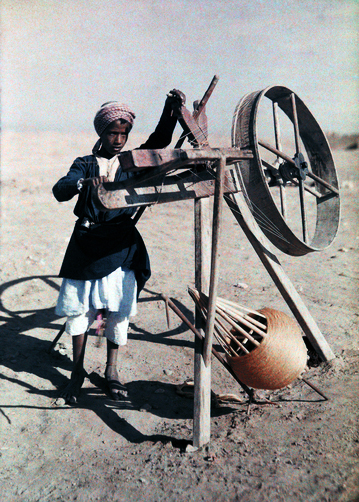
Boy reels silk in a desert near Cairo.
This collection of autochromes taken in the 1920s by Gervais Courtellemont and W. Robert Moore for National
Geographic reveals the everyday life of Egyptian women, men, merchants, and children. They show familiar Cairo city locations and famous sites such as the pyramids.
In the 19th century, there was the rapid growth of communities of unassimilated foreigners, mainly European, living in Egypt; these acquired a dominating influence over finance, industry, and government.
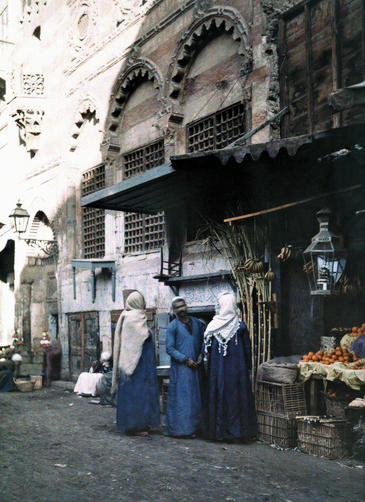
Man and two women stand at his homegrown fruit booth in Cairo.
In the 1920s, which was a peak period, the number of foreigners in Egypt exceeded 200,000, the largest community being the Greeks, followed by the Italians, British, and French.
The arrival of the Europeans in Egypt remade Cairo. The modern quarters of the city were taken over by European arrivals who built European shops and built exclusive clubs.
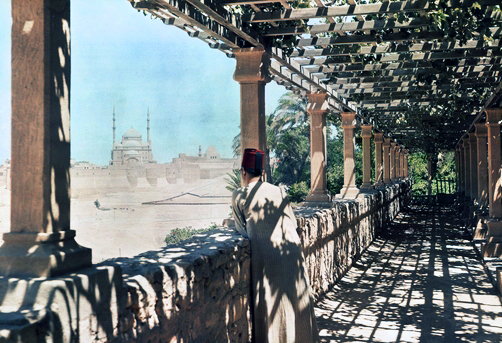
Man peers out from a latticework covered balcony.
The new quarters of the city grew into vast blocks of apartment buildings. Two new sections were added to Cairo: Maadi, to the south, was built as an exclusive European enclave shortly after the turn of the century, and Heliopolis, to the northeast, was built in the 1910s.
These areas were built with the latest in modern conveniences: running water, electricity, and a tramway that connected Heliopolis to central Cairo. By contrast, the older sections of the city were not modernized.
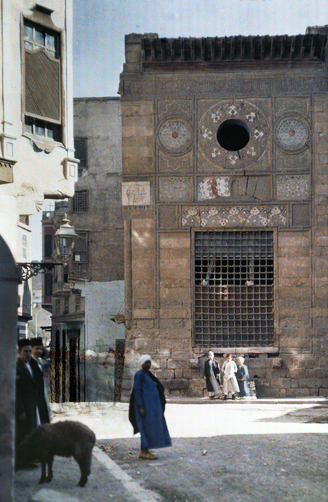
Beautiful building sits untouched in the streets of old Cairo.
According to most scholars the history of modern Egypt dates from the start of Muhammad Ali’s rule in 1805 and his launching of Egypt’s modernization project that involved building a new army and suggesting a new map for the country, though the definition of Egypt’s modern history has varied in accordance with different definitions of modernity.
Muhammad Ali’s dynasty became practically independent from Ottoman rule, following his military campaigns against the Empire and his ability to enlist large-scale armies, allowing him to control both Egypt and parts of North Africa and the Middle East.
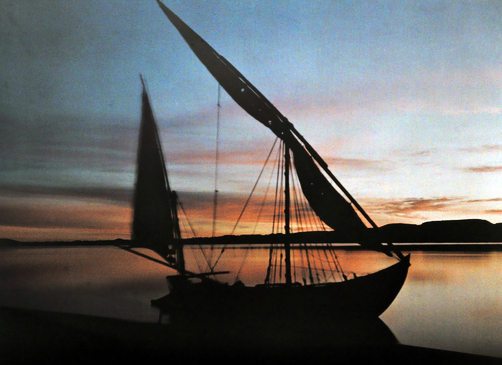
Boat sitting still in the water at sunrise.
In 1882, the Khedivate of Egypt became part of the British sphere of influence in the region, a situation that conflicted with its position as an autonomous vassal state of the Ottoman Empire.
The country became a British protectorate in 1915 and achieved full independence in 1922, becoming a kingdom under the rule of Muhammad Ali’s dynasty, which lasted until 1952.
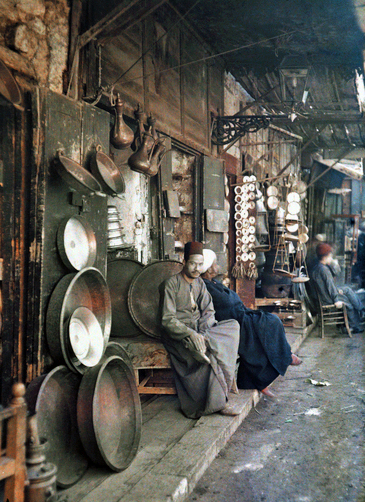
Man sitting next to his store for the Egyptian version of a washtub.

Man standing outside of his quilt and cushion shop in old Cairo.
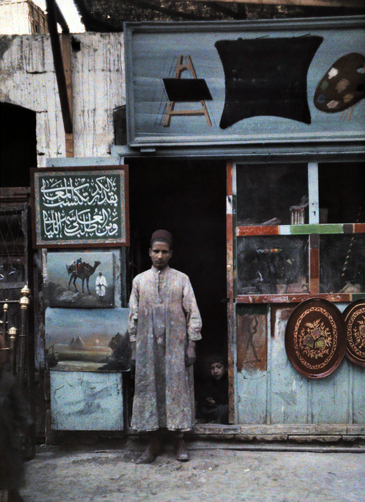
Painter standing in the doorway of his shop.
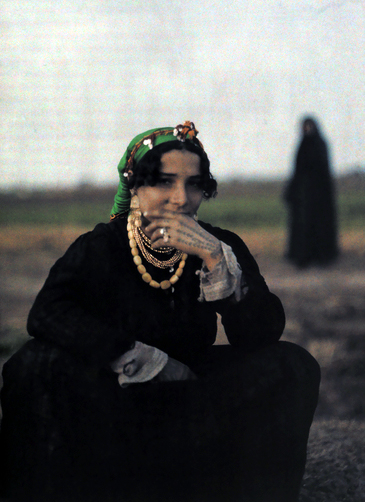
Peasant singer poses in a seated position.
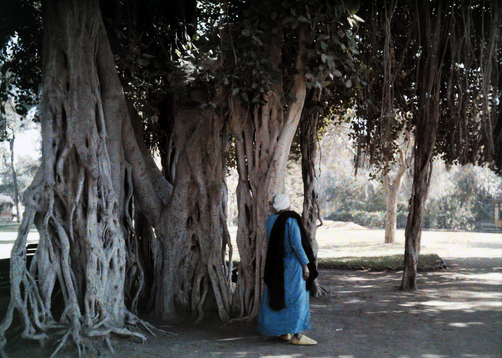
Person leans against a Ficus tree in the garden of Esbekieh.
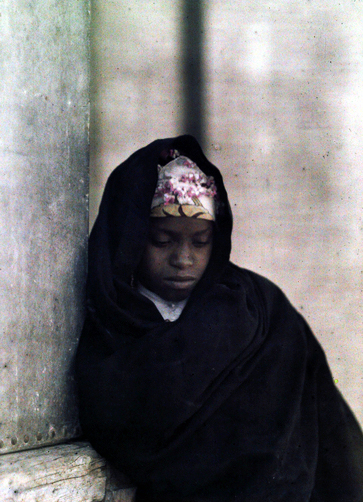
Portrait of a young Nubian girl.

Shoe vendor sits next to his store.
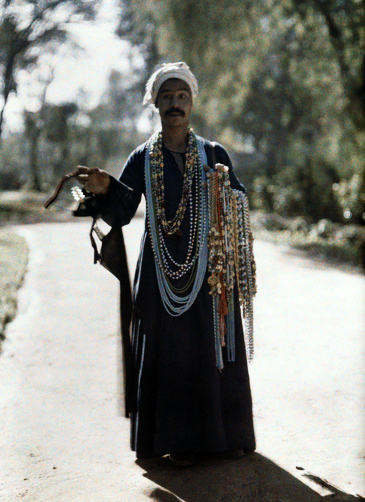
Souvenir merchant walks carrying beads and necklaces.
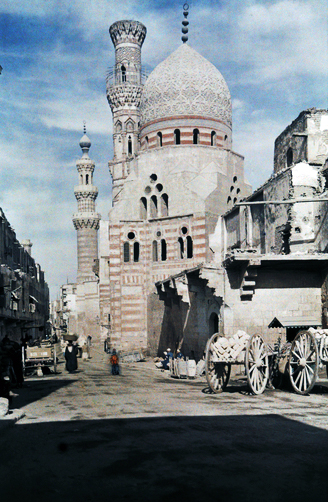
Street view of a mosque with a wall covered in blue tiles.
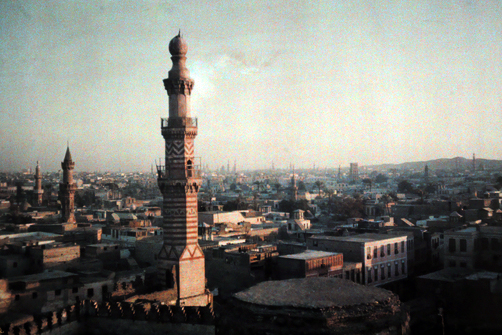
View of a tower in Cairo.
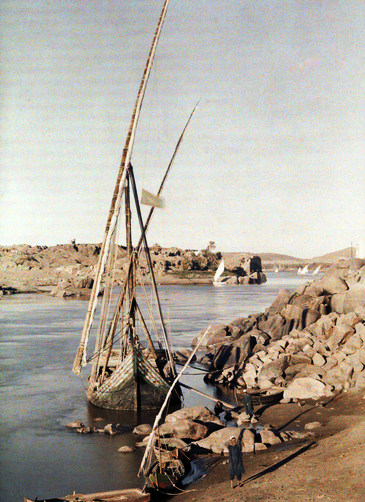
View of fishermen docking on Philae Island.

View of the Great Sphinx at sunset.

View of the Monastery of Saint Catherine amid granite peaks.
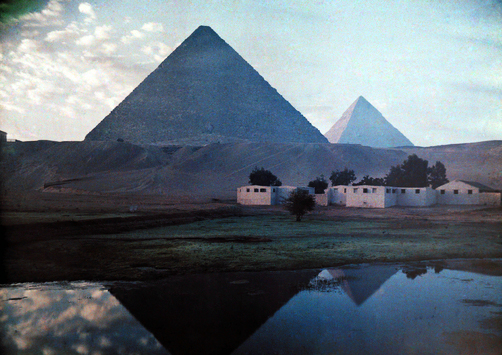
View of the Pyramids of Giza.
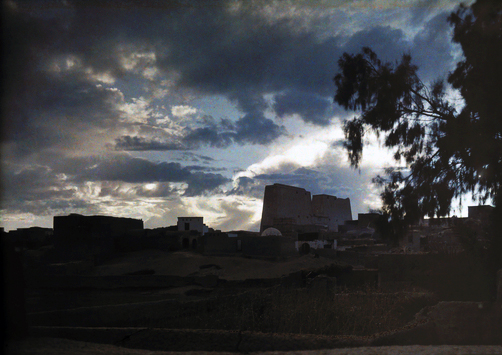
View of the Temple of Edfu at sunset.

View of the first Nile cataract at Aswan.
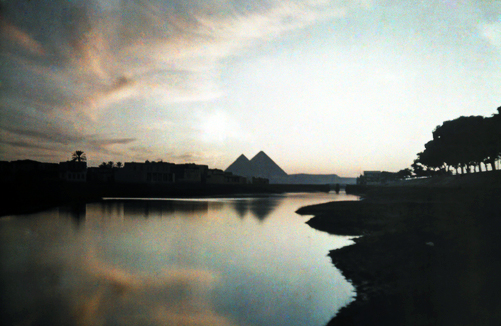
View of the pyramids at sunset.
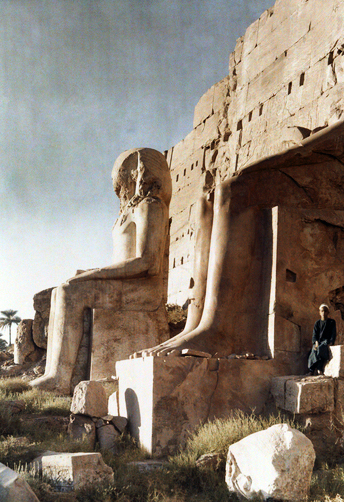
View of the ruins of the Hall of the Temple of Ammon.

Woman in black attire posing.
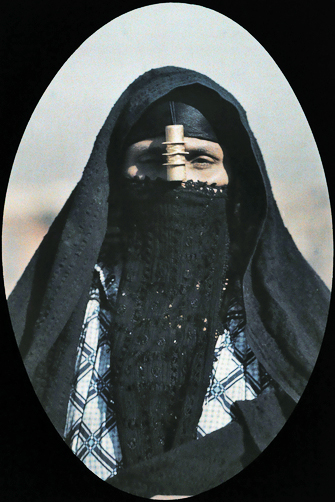
Woman wearing a Muslim headdress.
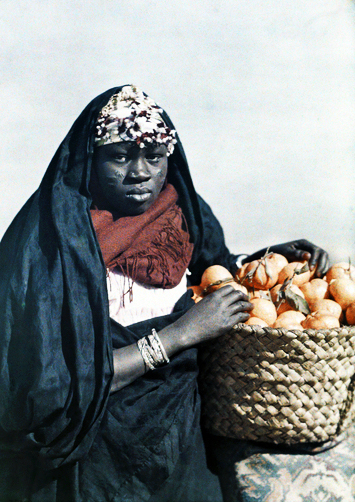
Woman posing with a basket of mandarins or tangerines.

Woman sitting on a rock with jewelry beside her.
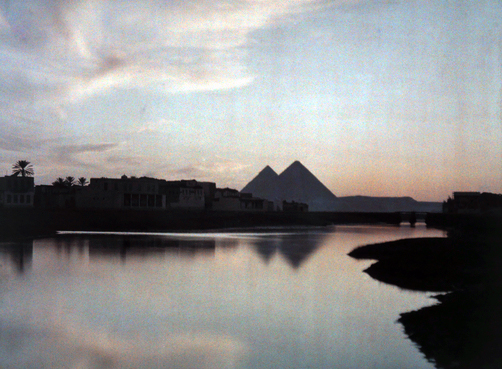
View of the pyramids with buildings in between.

Woman sitting with her fruits for sale.
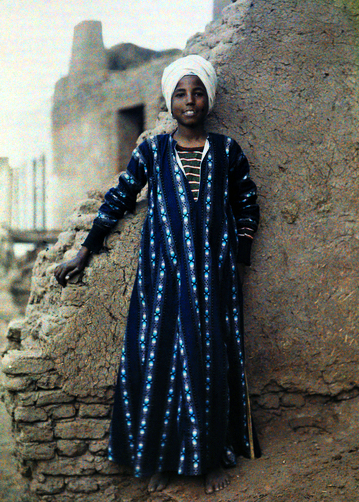
Young boy who journeys on donkeys leans against a stone wall.

Young cabaret dancer posing for a photograph in traditional clothing.
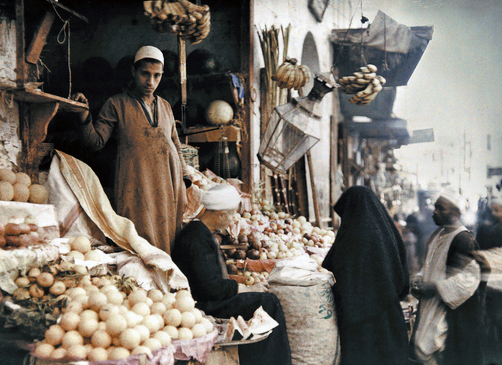
Egyptian street merchant sells fruits.
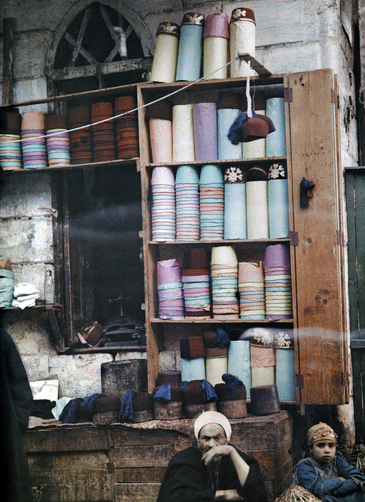
Egyptian street merchant sells hats.
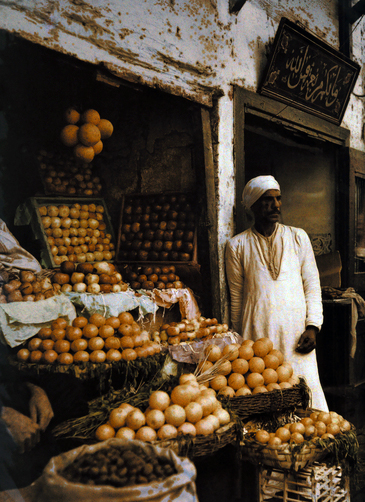
Orange merchant awaits customers.
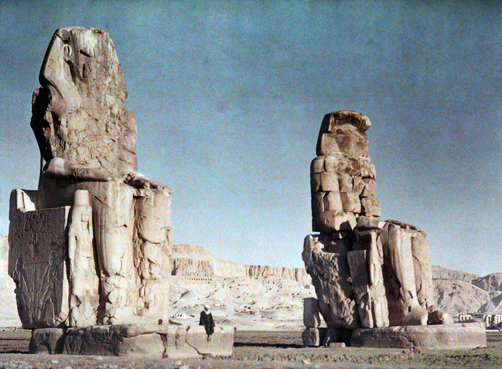
Colossi of Memnon once guarded entrance to Temple of Amenophis.
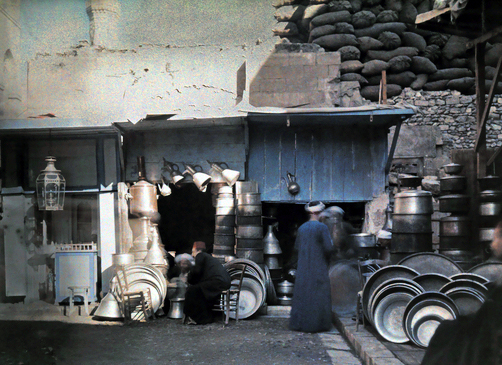
Men sitting at a shop at a bazaar.
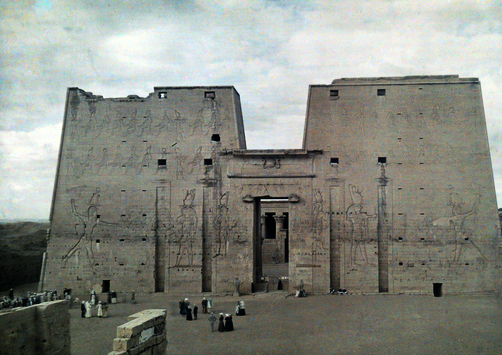
People standing outside the Temple of Horus.
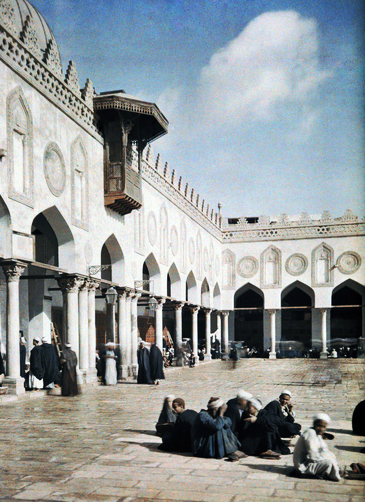
Students sitting in the courtyard of the Mosque of el Azhar.
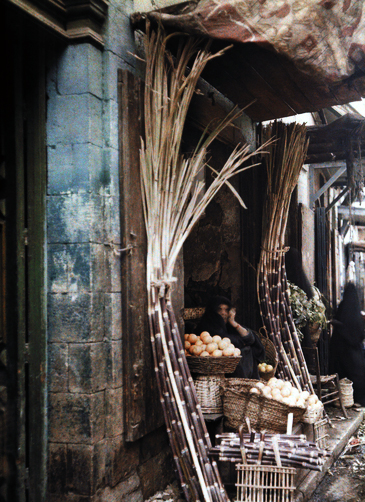
Sugarcane vendors waiting for customers.
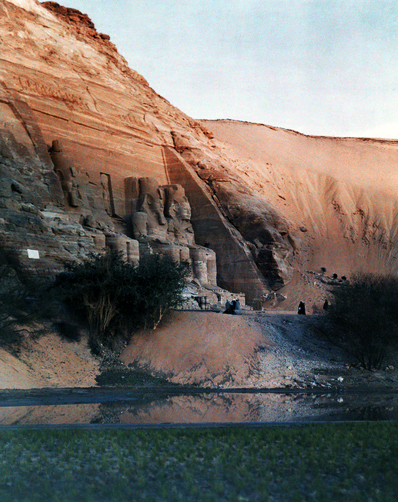
The image of Rameses II carved into the rock at Abu Simbel.

The mosque-like Tomb of Caliphs near Cairo holds Luxor and Arab heroes.
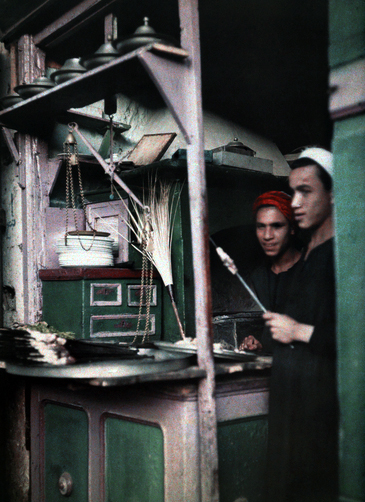
Two boys cooking meat at a meat shop in Egypt.
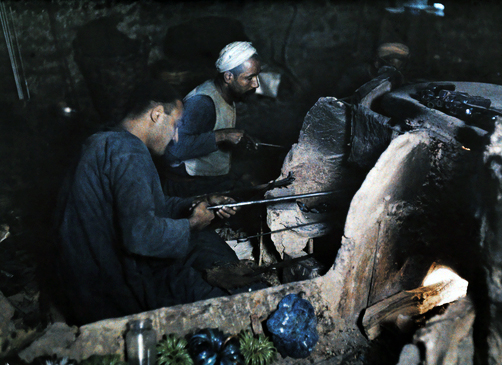
Two men making glass.

Two men making tents.
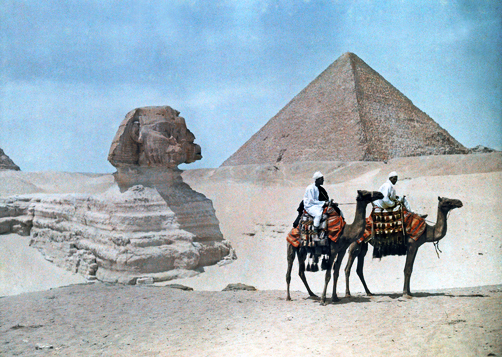
Two men on camel-back ride past the Sphinx and Great Pyramid.

Two men stand in front of souvenir booths in the street of Cairo.

Two men work at a tarboosh booth in Cairo.
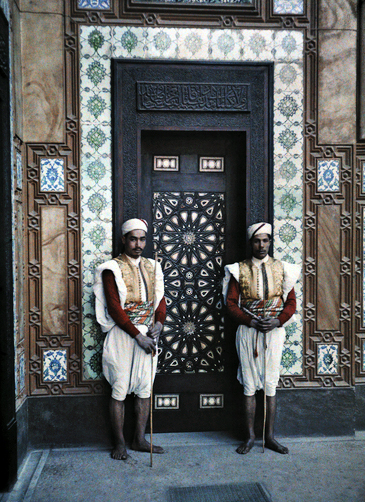
Two sais stand in front of the entrance to the French Legation.
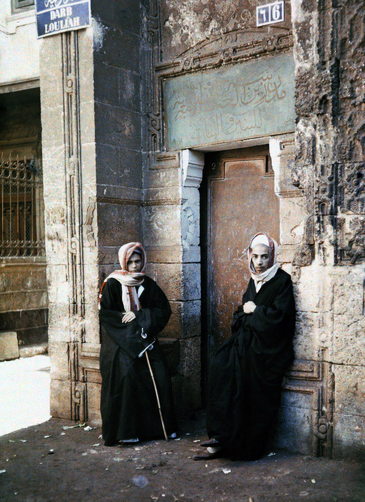
Two students of Mecca stand at the Mosque of el Azhar.
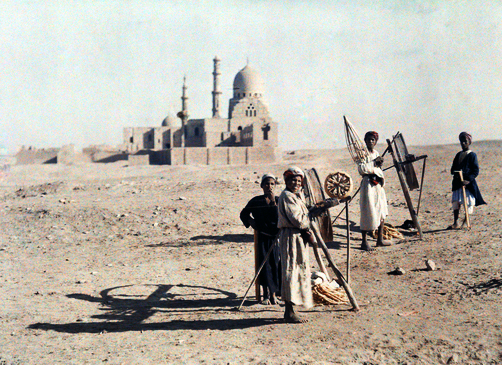
Winders of silk at the Tombs of the Caliphs.
(Photo credit: Gervais Courtellemont and W. Robert Moore for National Geographic / Wikimedia Commons).